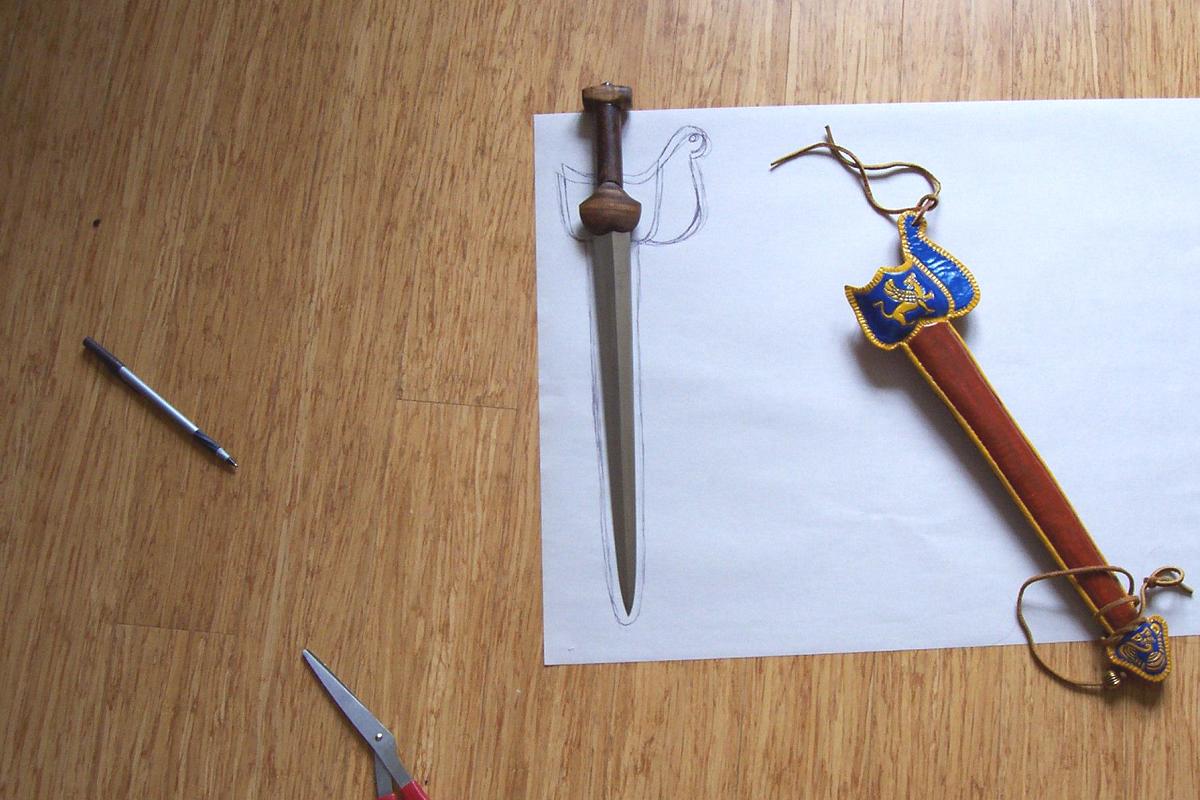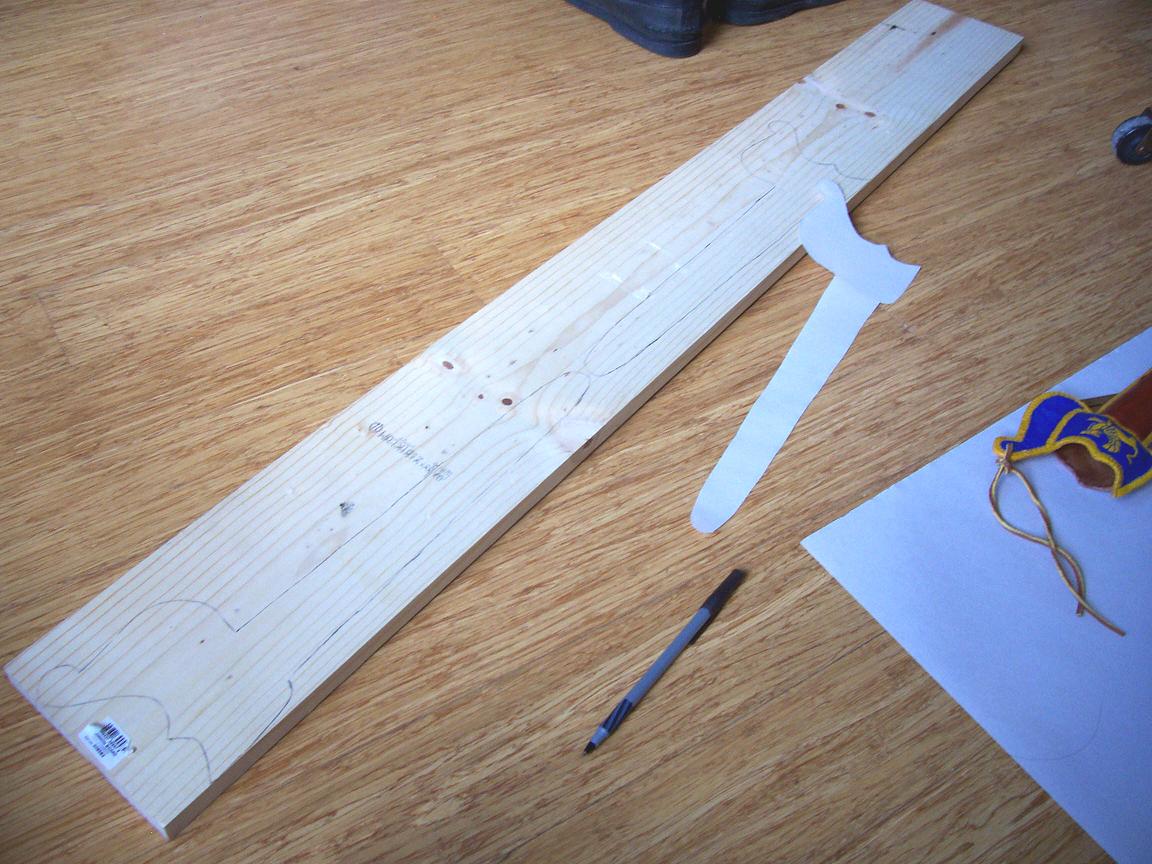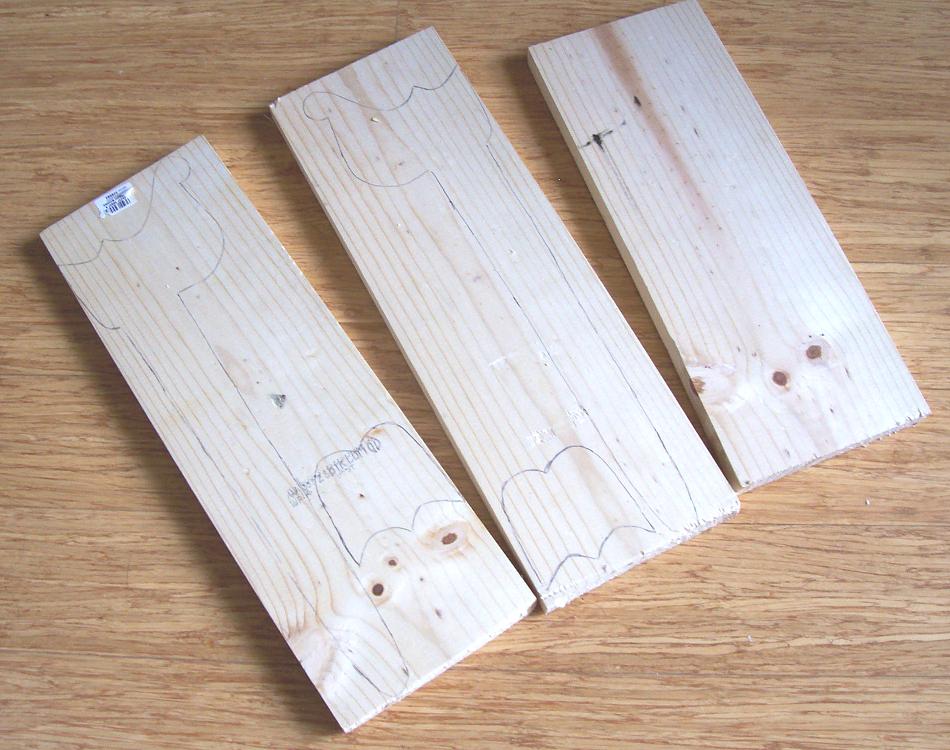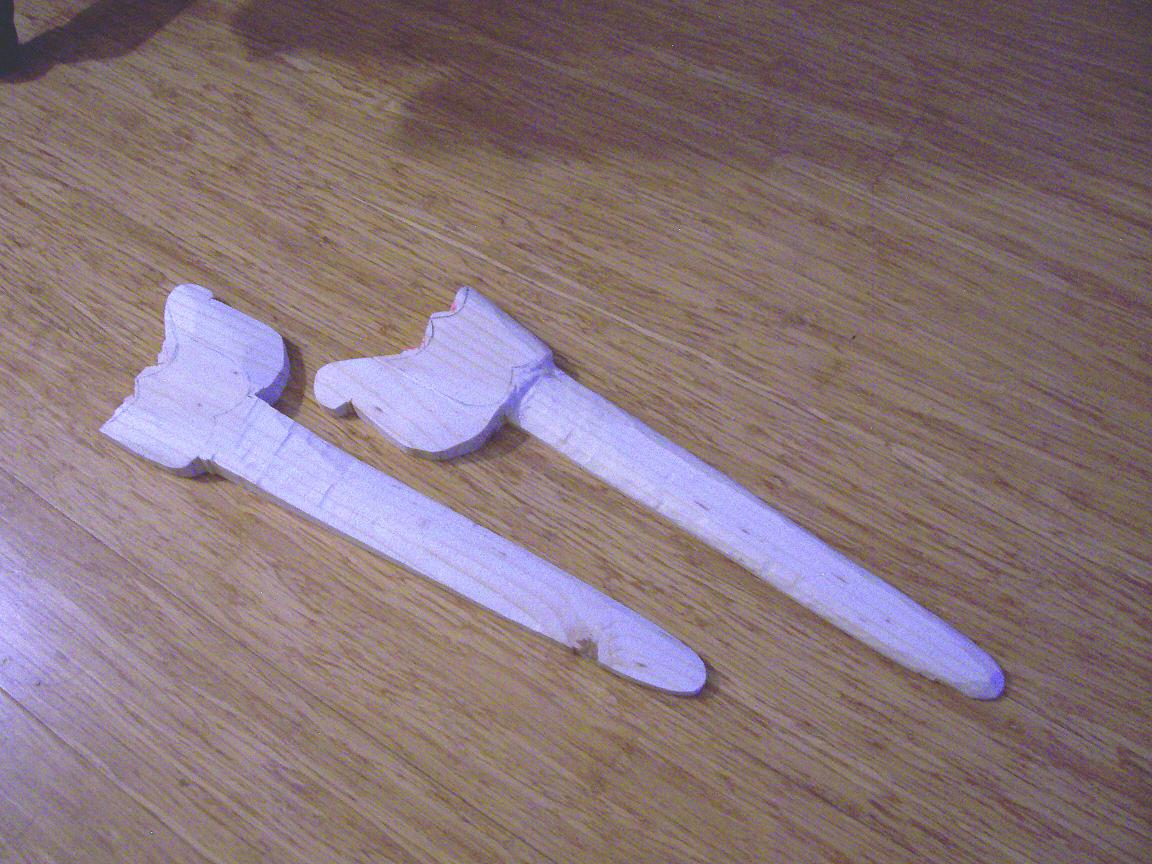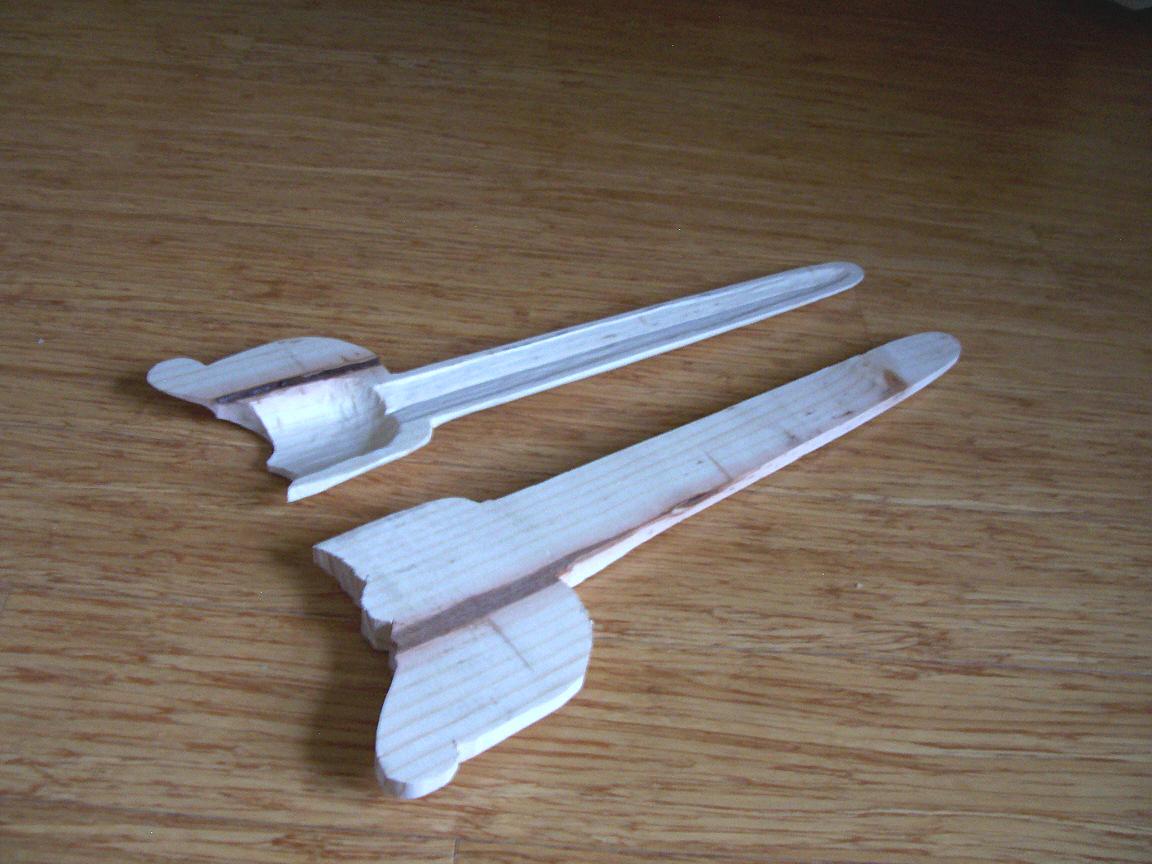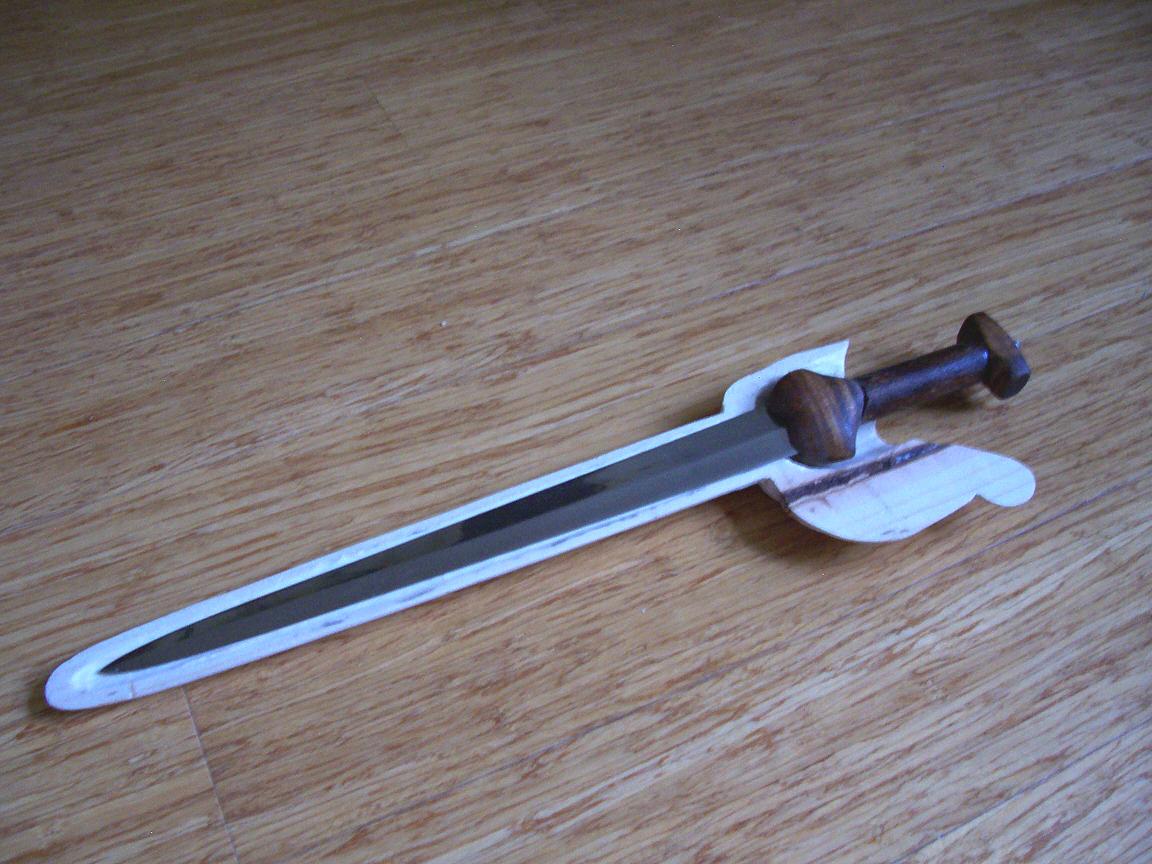A guide to the Achaemenid Persian empire for reenactors, focusing on the Graeco-Persian Wars period. A quick guide to Persian history, society, religion, military, clothing and culture, plus links to reenactment groups and commemorations of the 2,500th anniversary of the Graeco-Persian Wars.
Sunday, October 26, 2014
Update on Windlass javelin head
Kult of Athena has the new Windlass javelin or small spearhead for sale, so we get some better-quality pics. And, sadly, it has no mid-rib at all. As such, it's not really what we're looking for. Sorry.
Friday, October 24, 2014
Making a wooden akinakes scabbard, part II
Various personal business forced me to postpone further work until Monday, but work's progressed quickly since then. The core is essentially complete. I won't boother with photos of the front shell in progress because it's exactly the same process as the back shell.
It's still somewhat too thick in several places, most obviously the lower body, considering how thin the blades are. I may do a little further sanding, though the very hard knot you see near the lower end has made reducing by hand evenly pretty difficult.
Although the amount of wood removed on the inside wasn't much, it still fit the blades too loosely, so I glued down a strip of felt to make it more snug before gluing the shells together - a solution cribbed from European swordmakers (though sheep and goat hide are said to be preferable, as a pointed blade could eventually catch in the felt, tear it loose and shove it down the inside, where it would be difficult or impossible to remove - quite an awful scenario). If the fit is correct, you can hold the scabbard upside-down without the sword falling out, yet still draw it easily.
It's still somewhat too thick in several places, most obviously the lower body, considering how thin the blades are. I may do a little further sanding, though the very hard knot you see near the lower end has made reducing by hand evenly pretty difficult.
Although the amount of wood removed on the inside wasn't much, it still fit the blades too loosely, so I glued down a strip of felt to make it more snug before gluing the shells together - a solution cribbed from European swordmakers (though sheep and goat hide are said to be preferable, as a pointed blade could eventually catch in the felt, tear it loose and shove it down the inside, where it would be difficult or impossible to remove - quite an awful scenario). If the fit is correct, you can hold the scabbard upside-down without the sword falling out, yet still draw it easily.
Tuesday, October 14, 2014
Making a wooden akinakes scabbard, part I
Yep, I finally decided to cave and make a proper, solid wood scabbard, since I happen to have access to a band saw and belt sander this season. Mine will be based loosely on the tamarisk wood scabbard from Egypt, but I hope to make a separate chape. I also plan to cover it with something organic, possibly linen or rawhide, rather than the metal facing that once covered the Egypt find, because in my research it seems that isolated chapes far outnumber metal scabbard facings, and so I believe that most scabbards were entirely biodegradable other than the chape.
You'll also notice that it's considerably longer than the one from Egypt. Although often described as swords, the few genuine findings of Achaemenid iron fighting akinakai I know of were actually small-ish daggers, so the 12-inch blade on mine is really pushing it as far as historical accuracy. Perhaps the skill required and thus (presumably) high price demanded for forging a symmetrical double-edged sword was responsible for the preference of Persians (imputed by Greek pottery, at least) for the single-edged kopis, but I'm just running at the mout at this point. Anyway, on with the show.
We start with a nice big sheet of sketch paper and a 1x6x48-inch plank. On the right is my molded leather scabbard from last year.
After tracing the main sections of the scabbard, I cut out the expanded part of the throat and traced additional sections for it on the main plank as well as on a 1/4-inch linden board, as the full inch-thick reinforcement seemed like too much. I didn't wind up using either of them; the main pieces seem to be thick enough on their own.
The pine wood is soft and cut easily even with just a manual saw, which made me wonder about its sturdiness. These initial cuts were done just to make it easier to carry. I plan to use the excess for a really cool retro raygun stock.
Since the band saw is best at straight cuts, I tried to get the most out of it with a set of lines for the first cutting-out phase.
The belt sander helped reduce the manual workload, but it can only take you so far. On the bottom/left is the front blank after initial cutting and sanding; on the top/right is the back after ah hour of whittling.
Four days and literally hours of whittling, filing and Dremel-ing later, the back shell is finally done.
I know it sounds like I'm complaining, but I just want to be straightforward with you: It is a lot of work if you don't have specialized tools.
It's at this point that I question the wisdom of asking everyone to have wooden scabbards for their akinakai. If molded leather must be ruled out, I think a rawhide scabbard would still be a possibility, and it seems far easier. I also suspect that a moldable material is the origin of the balloon-like expanded throat of Achaemenid scabbards.
You'll also notice that it's considerably longer than the one from Egypt. Although often described as swords, the few genuine findings of Achaemenid iron fighting akinakai I know of were actually small-ish daggers, so the 12-inch blade on mine is really pushing it as far as historical accuracy. Perhaps the skill required and thus (presumably) high price demanded for forging a symmetrical double-edged sword was responsible for the preference of Persians (imputed by Greek pottery, at least) for the single-edged kopis, but I'm just running at the mout at this point. Anyway, on with the show.
We start with a nice big sheet of sketch paper and a 1x6x48-inch plank. On the right is my molded leather scabbard from last year.
After tracing the main sections of the scabbard, I cut out the expanded part of the throat and traced additional sections for it on the main plank as well as on a 1/4-inch linden board, as the full inch-thick reinforcement seemed like too much. I didn't wind up using either of them; the main pieces seem to be thick enough on their own.
The pine wood is soft and cut easily even with just a manual saw, which made me wonder about its sturdiness. These initial cuts were done just to make it easier to carry. I plan to use the excess for a really cool retro raygun stock.
Since the band saw is best at straight cuts, I tried to get the most out of it with a set of lines for the first cutting-out phase.
The belt sander helped reduce the manual workload, but it can only take you so far. On the bottom/left is the front blank after initial cutting and sanding; on the top/right is the back after ah hour of whittling.
Four days and literally hours of whittling, filing and Dremel-ing later, the back shell is finally done.
I know it sounds like I'm complaining, but I just want to be straightforward with you: It is a lot of work if you don't have specialized tools.
It's at this point that I question the wisdom of asking everyone to have wooden scabbards for their akinakai. If molded leather must be ruled out, I think a rawhide scabbard would still be a possibility, and it seems far easier. I also suspect that a moldable material is the origin of the balloon-like expanded throat of Achaemenid scabbards.
Subscribe to:
Posts (Atom)
